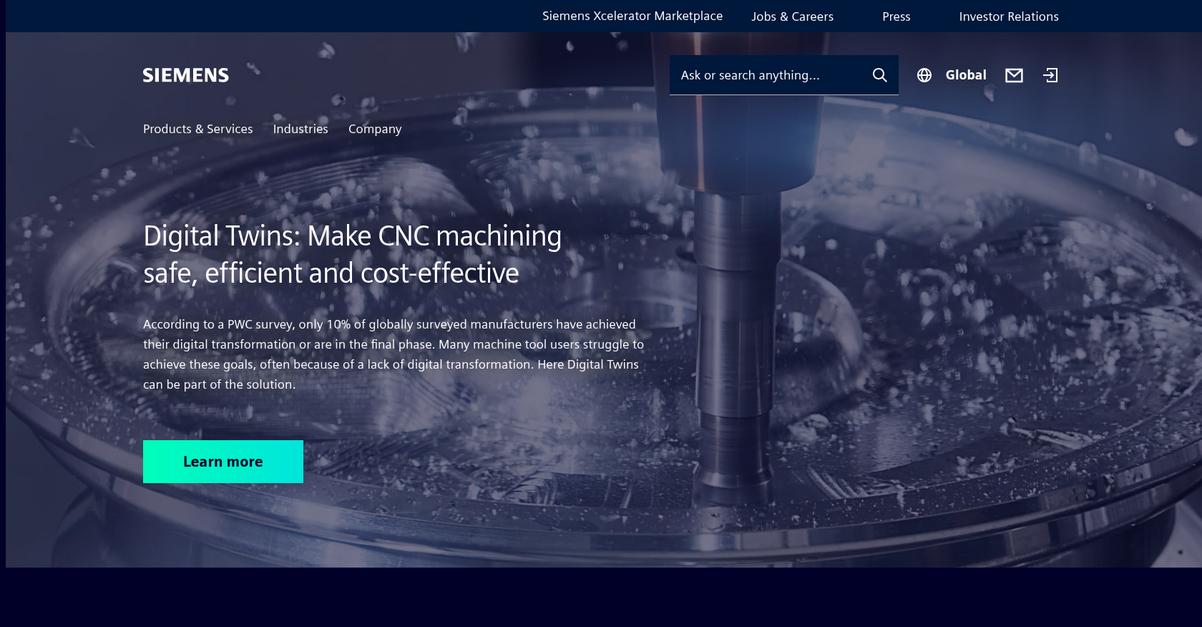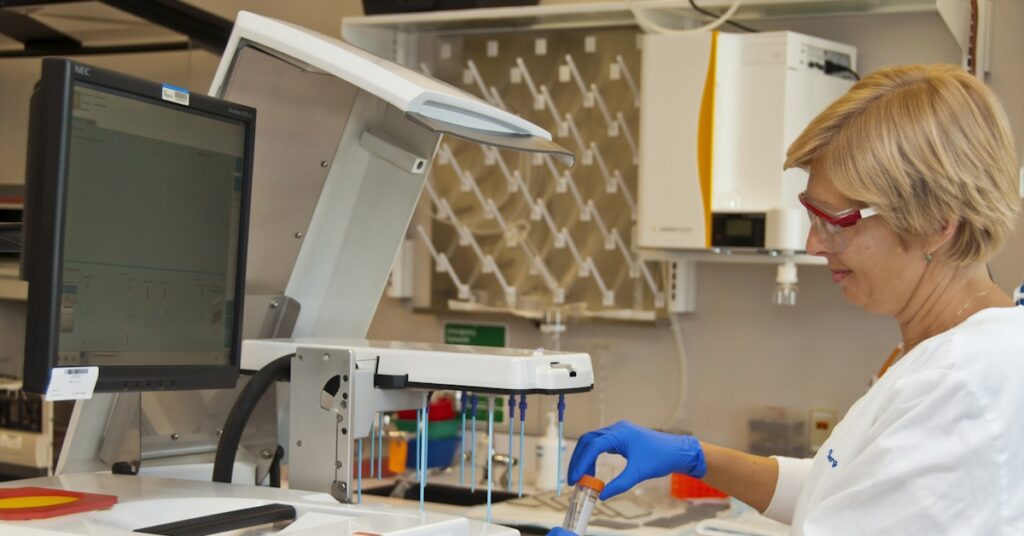Are costly redesigns derailing your projects?
Balancing high-fidelity simulation accuracy with tight project timelines and budgets is a constant struggle. It often leads to discovering thermal issues too late.
When designs overheat, you risk more than project delays. You’re preventing costly product failures and ensuring your product’s operational safety and compliance.
The challenge is that many tools are complex, requiring a steep learning curve. This decision paralysis makes justifying the ROI to stakeholders incredibly difficult.
Before diving deeper, you might find my analysis of best crypto compliance software helpful.
The right software provides the predictive power to catch these issues early. This will help you enhance your design accuracy and overall efficiency.
In this article, I’m going to guide you through my top recommendations. We’ll explore the best thermal analysis software to boost your team’s design process.
You will find solutions that integrate with your existing CAD workflows and meet your specific modeling needs, from kinetics to physiology metrics.
Let’s get started.
Quick Summary:
| # | Software | Rating | Best For |
|---|---|---|---|
| 1 | Siemens → | Large manufacturing teams | |
| 2 | SolidWorks → | Mid-sized engineering firms | |
| 3 | Autodesk → | Integrated CAD users | |
| 4 | Hexagon → | AI-focused engineering teams | |
| 5 | Altair → | High-performance computing users |
1. Siemens

Is your team struggling with design accuracy?
You’re likely facing the hurdle of integrating digital transformation into your processes. This means your current workflows might lack the crucial digital capabilities needed for precision.
Siemens addresses this by leveraging Digital Twins, allowing you to create virtual models that mirror real-world systems, ensuring your designs are more accurate.
This empowers your team to innovate.
Siemens introduces Digital Twins as a core solution for engineers. This approach helps overcome the lack of digital transformation that many manufacturers face, making your design processes more efficient. You can simulate and analyze complex systems virtually, identifying thermal risks early and avoiding costly redesigns down the line.
This capability is vital for managing intricate thermal interactions within your designs, ensuring product safety and performance. Plus, by adopting a comprehensive digital twin strategy, you unlock new levels of precision and predictive analysis, streamlining your development cycles.
The result is enhanced design confidence.
Key features:
- Digital Twins: Siemens enables the creation of virtual models to simulate real-world systems, enhancing design accuracy and efficiency in your thermal analysis workflows.
- Design Accuracy: By integrating Digital Twins, your team can achieve higher fidelity in simulations, ensuring more precise thermal predictions and reducing costly errors.
- Efficient Workflows: The software’s focus on digital transformation means you can streamline your engineering processes, leading to faster iterations and improved productivity.
Learn more about Siemens features, pricing, & alternatives →
Verdict: Siemens leverages Digital Twins to tackle core pain points like integration and accuracy, a critical capability for any team searching for the best thermal analysis software. This focus on digital transformation ensures designs are safe, efficient, and cost-effective, directly addressing your need for reliable predictions and streamlined workflows.
2. SolidWorks

Struggling with design accuracy and efficiency?
SolidWorks helps you overcome these challenges by offering tools to accelerate product development. This means you can streamline your design process from concept to manufacturing.
You’ll find SolidWorks enables you to address key thermal challenges, helping you validate designs and avoid costly errors.
Here’s how to boost your design capabilities.
SolidWorks empowers you to tackle complex thermal issues, making it easier to identify and mitigate thermal risks early in the design cycle. This helps you validate product performance and ensure safety.
The software lets you transform your ideas into reality with its robust design capabilities, providing everything you need to create innovative products. You can simulate different thermal conditions to optimize performance, preventing costly late-stage design changes.
Additionally, SolidWorks supports your product innovation journey by integrating various design and analysis tools into one platform. This allows you to collaborate effectively across teams, ensuring all aspects of your thermal design are considered and refined for optimal results.
Unlock your product innovation potential.
Before diving deeper into thermal solutions, you might find my analysis of best nutrition analysis software helpful for other analytical needs.
Key features:
- Accelerated product development: Transform ideas into reality faster, allowing you to quickly move from concept to thermal validation and manufacturing.
- Comprehensive design capabilities: Offers all the tools you need to create and refine your thermal designs, ensuring accuracy and performance from the start.
- Enhanced design validation: Helps you validate product performance early by simulating thermal conditions, avoiding costly redesigns and ensuring product safety.
Learn more about SolidWorks features, pricing, & alternatives →
Verdict: SolidWorks stands out as the best thermal analysis software, offering robust capabilities that address key challenges for engineering managers. Its integrated design and validation tools enhance accuracy and efficiency, allowing you to identify thermal risks early and ensure product safety.
3. Autodesk

Struggling to find thermal analysis software that truly performs?
You need tools that improve design accuracy and efficiency, handling complex challenges without overcomplicating your workflows. This means addressing the core issues of balancing high-fidelity simulation with computational efficiency. You need a solution that integrates seamlessly into your existing engineering ecosystem. You are looking for a practical answer.
Here’s how Autodesk empowers your team to overcome these hurdles.
Autodesk offers comprehensive solutions designed to enhance your design accuracy and accelerate iteration. You can avoid costly redesigns by identifying thermal risks early, ensuring product safety through accurate predictions. This comprehensive approach streamlines your design process, making it more efficient and reliable. Additionally, Autodesk helps you make informed decisions, preventing expensive last-minute changes. This results in faster time to market and reduced development costs for your critical projects.
Achieve peak design performance.
Key features:
- Integrated Workflow Support: Seamlessly connects with existing CAD/CFD workflows, ensuring smooth data transfer and reducing integration complexities for your engineering teams.
- High-Fidelity Simulation: Provides advanced tools for precise thermal analysis, allowing you to accurately predict thermal behavior and optimize designs for maximum performance.
- Reduced-Order Modeling: Enables rapid design iteration by simplifying complex models, saving computational time while maintaining accuracy for faster decision-making.
Learn more about Autodesk features, pricing, & alternatives →
Verdict: Autodesk stands out as the best thermal analysis software, offering solutions that enhance design accuracy and efficiency. Its ability to integrate with existing workflows and provide high-fidelity simulations directly addresses the pain points of engineering managers, ensuring you avoid costly redesigns and meet industry standards.
4. Hexagon

Struggling with simulation accuracy and design efficiency?
Hexagon’s advanced capabilities allow you to decode complexity with digital precision. This means you can accurately capture and digitize physical assets.
Building on this, the software adds context, analytics, and simulation to your designs, empowering you to improve, automate, and enhance your processes.
Ready for smarter, faster results?
Hexagon empowers you to make data-driven decisions by combining advanced scanners and sensors with spatial technology and AI. This ensures you get actionable insights.
You can leverage AI-enabled workflows and platforms for high-value ROI, boosting your productivity. Plus, Hexagon’s Nexus platform offers seamless integration across Hexagon and third-party systems, further enhancing productivity with AI and digitalization. This ultimately accelerates your business operations.
This leads to enhanced design accuracy.
Key features:
- Digital precision capture: Digitize and position physical assets precisely, forming the foundation for accurate thermal analysis and avoiding costly redesigns.
- Contextualized simulation: Add context, analytics, and design to your simulations, allowing for in-depth understanding and the efficient identification of thermal risks.
- AI-driven insights: Utilize AI-enabled workflows and digital twins to get smarter, faster results and actionable insights for improved decision-making and product safety.
Learn more about Hexagon features, pricing, & alternatives →
Verdict: Hexagon is an excellent choice for best thermal analysis software, offering digital precision and AI-driven insights to boost your design accuracy and efficiency. Its ability to decode complexity, integrate with existing systems, and provide high-value ROI makes it ideal for engineering managers seeking accurate, rapid design iteration.
5. Altair

Tired of slow thermal analysis hindering your designs?
Altair’s AI-powered [design and simulation capabilities] directly address the need for high-fidelity simulation and rapid iteration.
This means you can solve complex thermal problems with ease within their open, unified environment, avoiding costly redesigns and ensuring product safety.
Discover next-level design accuracy.
Altair HyperWorks equips you with AI-powered design and simulation, making it ideal for engineers seeking precision and speed in thermal analysis. This includes dedicated solutions for fluids & thermal applications, directly supporting your need for specialized modeling. Additionally, Altair HPCWorks maximizes compute resource utilization, streamlining complex AI, modeling, and simulation tasks for rapid iteration. Plus, with over 180 products, you get the tools to handle everything from dynamic environmental modeling to integrating with existing workflows, ultimately boosting your design efficiency.
The result: accurate, efficient thermal design.
While discussing tools for performance, you might also be interested in my guide on best Microsoft partners for business solutions.
Key features:
- AI-Powered Design & Simulation: Offers comprehensive AI-powered capabilities within an open, unified environment to solve complex thermal problems efficiently.
- Dedicated Fluids & Thermal Solutions: Provides specialized applications explicitly designed for fluid and thermal analysis, enhancing simulation accuracy for various scenarios.
- HPC & Cloud Technology: Maximizes computational resource utilization, accelerating complex AI, modeling, and simulation tasks, leading to faster design cycles.
Learn more about Altair features, pricing, & alternatives →
Verdict: Altair’s AI-powered HyperWorks platform, coupled with dedicated fluids & thermal solutions and robust HPC capabilities, positions it as a strong contender for the best thermal analysis software. It directly addresses the need for high-fidelity simulation and rapid iteration, helping you avoid costly redesigns and ensure product safety.
6. COMSOL

Elevate your thermal design accuracy and efficiency.
COMSOL provides fully coupled multiphysics and single-physics modeling capabilities. This means you can simulate real-world designs and processes.
It offers a complete modeling workflow, from geometry to results evaluation. This helps you understand, predict, innovate, and optimize your designs.
You need deeper insights into your designs.
COMSOL Multiphysics® offers a consistent user interface across all engineering applications. This consistency simplifies the learning curve.
The software includes add-on modules providing specialized functionality for heat transfer and fluid flow. You can also interface directly with CAD and other third-party software, streamlining your existing workflows. This enables you to integrate thermal analysis seamlessly with your current engineering ecosystem, allowing for rapid design iteration and minimizing costly redesigns by identifying thermal risks early.
The Model Builder allows you to combine multiple physics for complex simulations, and the Application Builder provides tools to build and deploy your own simulation apps for broader team use.
It truly helps you innovate.
Speaking of optimizing designs, my guide on printing and packaging industry software explores how specialized tools can boost output and compliance.
Key features:
- Fully Coupled Multiphysics: Combine various physics, including heat transfer and fluid flow, to simulate real-world thermal phenomena accurately and comprehensively.
- User-Friendly Application Builder: Create and deploy custom simulation apps, empowering your team to run specialized thermal analyses without needing deep software expertise.
- CAD and Third-Party Software Integration: Interface directly with your existing CAD and other engineering tools, ensuring seamless workflow integration and data exchange.
Learn more about COMSOL features, pricing, & alternatives →
Verdict: COMSOL stands out by enabling detailed multiphysics simulations and offering user-friendly tools for building and deploying simulation apps. This allows for unparalleled design accuracy and efficiency, making it the best thermal analysis software for engineering managers needing advanced, integrated solutions.
7. SimScale

Struggling with slow thermal analysis and high costs?
SimScale leverages cloud-native and AI-native technology, enabling you to accelerate design decisions by exploring thousands of engineering options in seconds. This means you can swiftly optimize electronics cooling and urban microclimates.
You’ll find SimScale helps you explore 1000’s of engineering decisions in seconds, moving seamlessly from rapid AI-led exploration to detailed physics validation, all within a unified platform. The result is faster development and significant cost reductions, avoiding costly redesigns.
Here’s how SimScale empowers your design process.
SimScale offers a comprehensive thermodynamics suite, covering heat transfer, thermomechanical, and thermal management, essential for robust product safety and performance. You gain access to an agentic AI assistant that guides you through model setup.
This means you can run physics simulation and AI prediction in the cloud, gaining real-time insights and automating workflows from setup to analysis. Additionally, SimScale integrates seamlessly with your existing CAD, solvers, and data pipelines, allowing you to run entire engineering AI and simulation workflows right in your browser. This open platform design also includes centralized data management and secure, governed access for your team.
The result is shipping better products faster.
Before diving deeper, you might find my analysis of cloud computing platforms helpful.
Key features:
- Cloud-Native Simulation: Gain instant access to powerful simulation and AI without hardware barriers, facilitating easy collaboration and scaling directly from your browser.
- AI-Driven Workflows: Leverage built-in AI for real-time insights and automated processes, empowering faster design decisions and predictive simulation capabilities.
- Comprehensive Thermal Physics: Conduct heat transfer, thermomechanical, and thermal management analyses, along with multiphysics capabilities like coupled thermo-mechanical and conjugate heat transfer.
Learn more about SimScale features, pricing, & alternatives →
Verdict: SimScale stands out by delivering cloud-native, AI-powered thermal analysis capabilities, allowing you to explore thousands of design options in seconds. With reported benefits like 24x faster cycle time for thermal packaging, it’s a truly powerful solution for finding the best thermal analysis software to reduce R&D costs and accelerate time-to-market.
8. Cadence

Struggling to optimize thermal performance in your designs?
Cadence offers advanced capabilities that tackle your most pressing thermal challenges, enhancing design accuracy. This means you can predict and manage heat effectively, ensuring product reliability.
Your team can avoid costly redesigns by identifying thermal risks early in the development cycle. This translates to significant savings and faster time-to-market.
Here’s how Cadence can help.
You can streamline your thermal analysis workflows, allowing for rapid iteration and informed decision-making. Their solutions enable you to simulate complex thermal behaviors with precision.
This includes capabilities for advanced human physiology metrics, ensuring product safety in extreme environments. Your team can accurately predict real-time core temperatures and perform in-depth thermal kinetics analysis.
Additionally, Cadence supports integration with existing CAD/CFD workflows, which is crucial for maintaining your current engineering ecosystem. This comprehensive approach simplifies compliance with industry standards, making your validation process smoother.
Achieve design accuracy and efficiency.
Before diving deeper, you might find my analysis of best database monitoring tools helpful for optimizing your overall system performance.
Key features:
- High-fidelity simulation accuracy: Predict and manage complex thermal behaviors with precision, minimizing design errors and ensuring product reliability.
- Reduced-order modeling efficiency: Accelerate design iterations and optimize performance by simplifying complex models without sacrificing accuracy.
- Seamless CAD/CFD workflow integration: Integrate effortlessly with your existing design tools, ensuring a smooth and consistent engineering process.
Learn more about Cadence features, pricing, & alternatives →
Verdict: Cadence stands out as a strong contender for best thermal analysis software, offering robust features like human physiology metrics and thermal kinetics analysis. Its ability to integrate with existing workflows and provide high-fidelity simulations directly addresses common pain points for engineering managers seeking to enhance design accuracy and efficiency.
9. PTC

Struggling with design accuracy and efficiency?
PTC offers digital solutions that accelerate product development through robust collaboration tools. This means you can effectively manage product complexity.
Their software helps you reduce costs and improve product quality across your entire enterprise. It is truly a game-changer.
Here’s how PTC helps.
PTC provides a digital foundation for transforming how your products are designed, made, and maintained. This means your engineers can overcome challenges by managing configurations and product variants seamlessly.
Their robust capabilities ensure you exceed quality expectations with an enterprise-wide approach. You can drive continuous quality improvements with everyone playing a role. Additionally, PTC’s digital thread strategy leverages product data strategically, opening up business opportunities across your entire value chain. This supports collaborative development and concurrent work throughout the product lifecycle, allowing you to innovate faster and deliver more value.
The result is increased revenue and accelerated innovation.
Key features:
- Accelerated product development provides strong collaboration tools, helping you manage product complexity while consistently delivering high-quality products.
- Reduced costs by transforming your product development processes with a digital foundation that minimizes friction and complexity across the entire enterprise.
- Managed product complexity through solutions for managing configurations, product variants, software/hardware requirements, and technical documentation efficiently.
Learn more about PTC features, pricing, & alternatives →
Verdict: PTC’s focus on digital transformation and collaborative tools makes it a strong contender for the best thermal analysis software. It directly addresses the need for enhanced design accuracy and rapid iteration, helping your team reduce costs and accelerate innovation, as seen by their 95% Fortune 500 discrete manufacturing customer base.
Conclusion
Thermal issues can derail your designs.
Finding the right software is a major hurdle. You need high-fidelity accuracy that doesn’t overcomplicate your existing design workflows or slow your entire engineering team down.
According to 360iResearch, companies using this software see reduced physical prototyping costs and an accelerated time-to-market. This powerful advantage is absolutely crucial for staying ahead of the competition.
Here’s the tool I’d choose.
From my experience, Ansys provides the best balance of advanced simulation accuracy and workflow efficiency. It’s my top pick for ending decision paralysis.
Its powerful simulation tools help your team identify thermal risks extremely early, preventing costly redesigns. It’s the best thermal analysis software for guaranteeing product safety and performance.
If you’re also exploring other software to enhance your design accuracy, my guide on best solar design software offers valuable insights.
I highly recommend you start a free trial of Ansys to see exactly how it can transform your team’s design process.
You’ll boost accuracy and efficiency.






